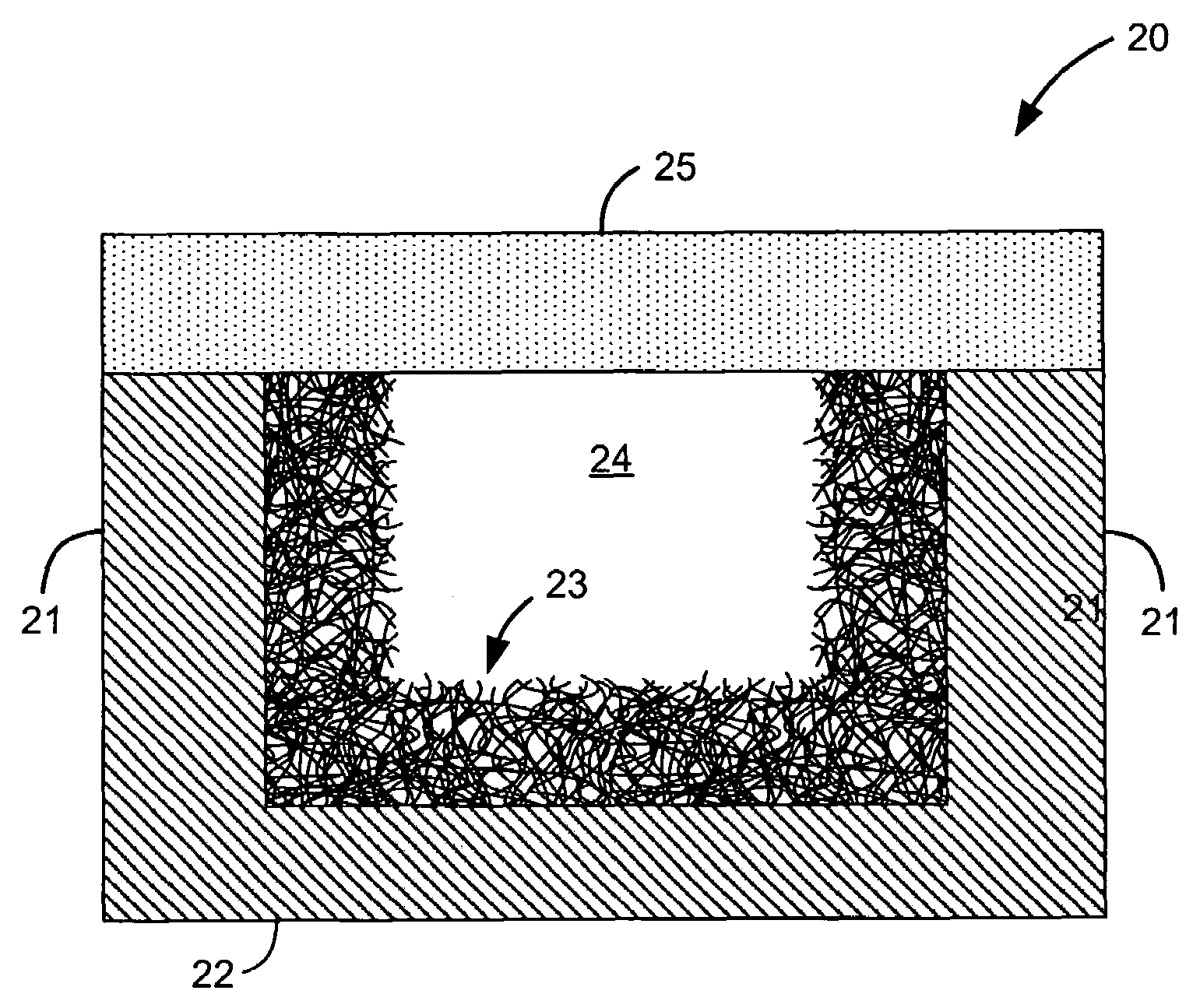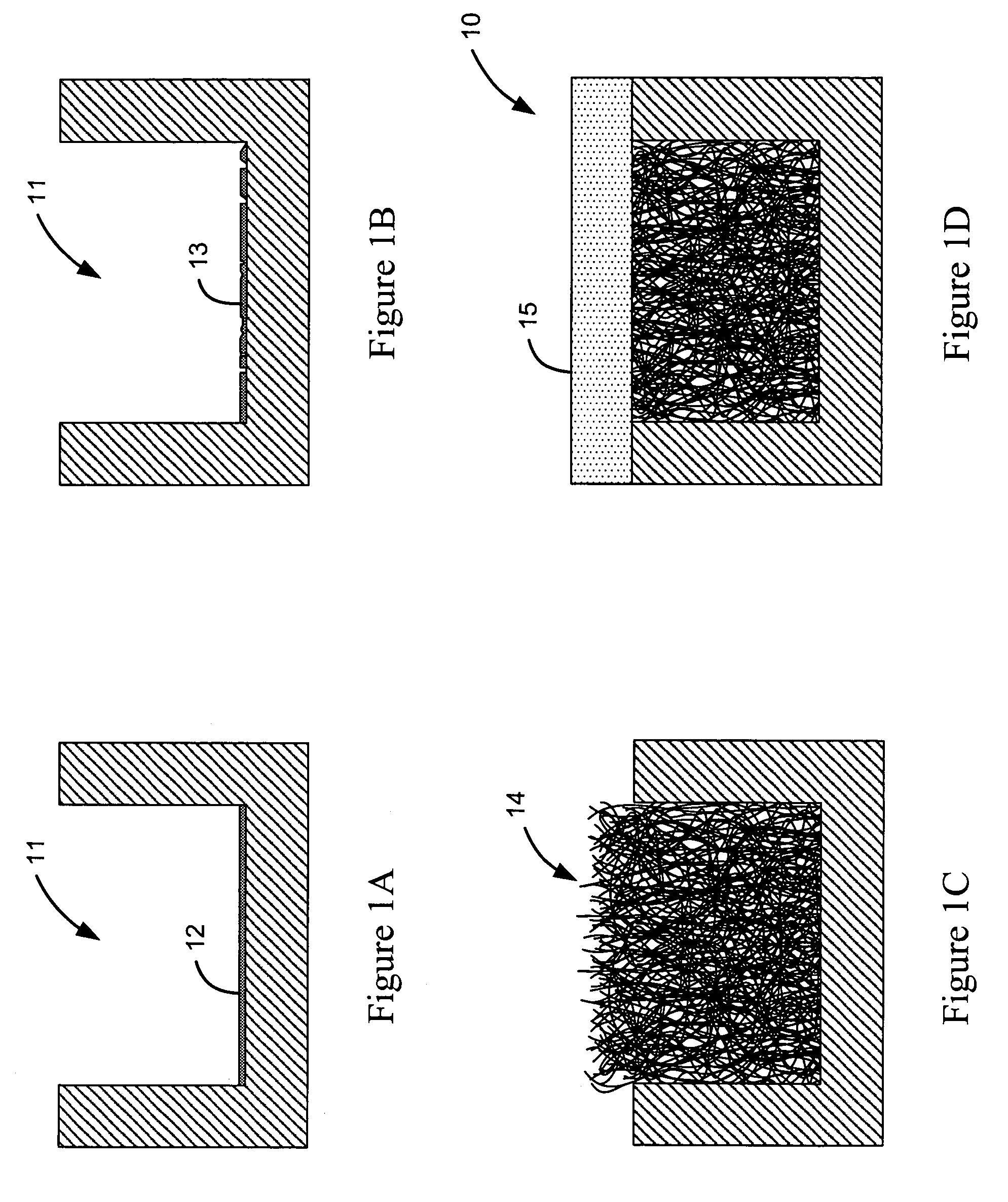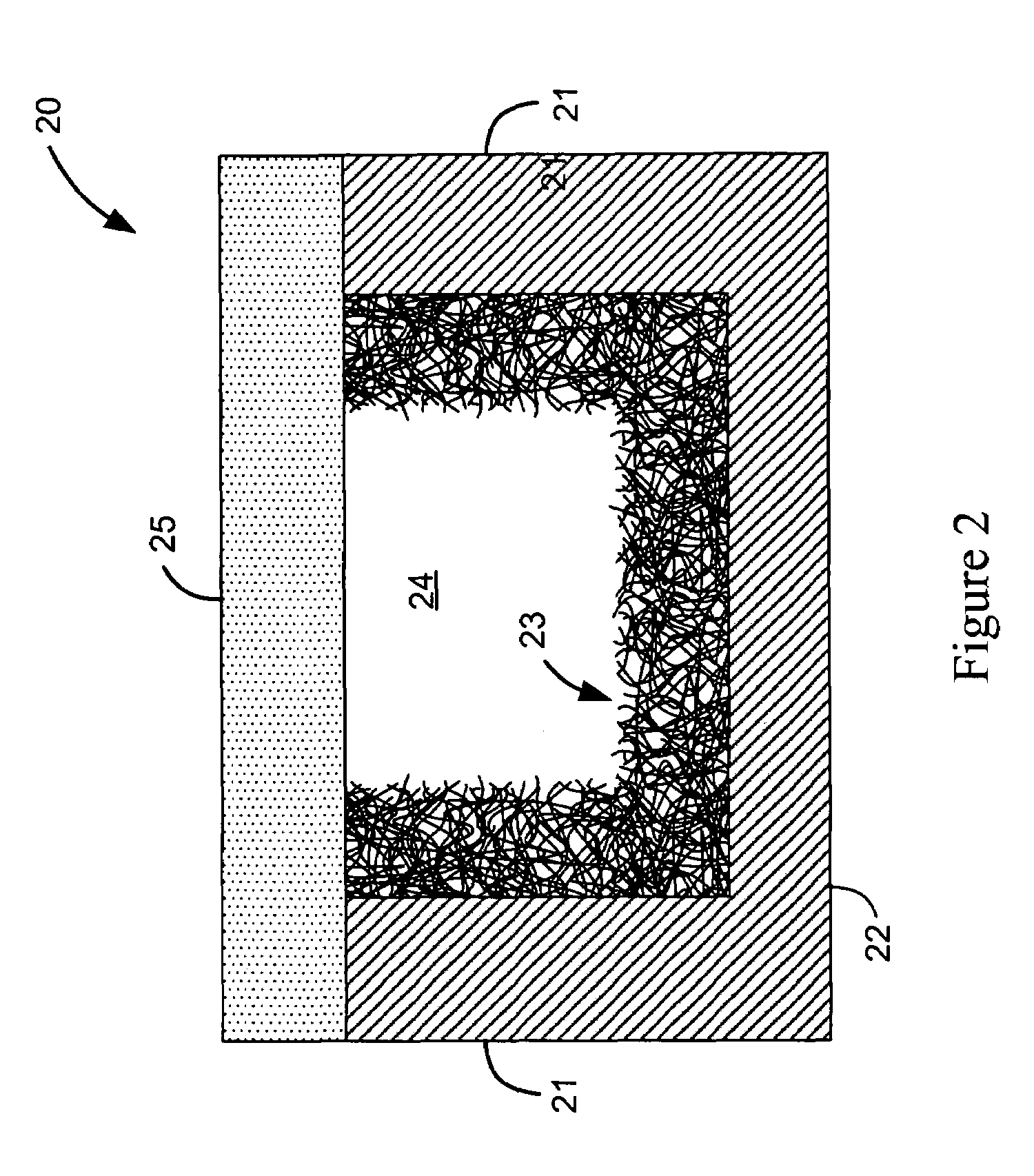Microfluidic sieve using intertwined, free-standing carbon nanotube mesh as active medium
- Summary
- Abstract
- Description
- Claims
- Application Information
AI Technical Summary
Problems solved by technology
Method used
Image
Examples
first embodiment
[0024]Turning now to the drawings, FIGS. 1A-D show the fabrication of the microfluidic sieve, generally indicated at reference character 10 (in FIG. 1D) using a CVD growth process. As shown in FIG. 1A, a channel 11 is first formed, e.g. by etching a groove, in a substrate made of silicon, fused silica or other patternable material. While a grooved channel configuration is shown having a floor surface and opposing vertical sidewall surfaces, it is appreciated that the channel and its cross-section may be configured with any suitable geometry, such as the curved cross-section shown in FIG. 7. Next a layer of iron catalyst 12 is deposited in the channel 11. The layer of iron catalyst is preferably a thin film layer having a thickness of about 5 nanometers, and deposited using thin film deposition techniques, such as evaporation or sputtering, with lithographic masking. It is appreciated, that as an alternative to an iron layer, colloidal iron nanoparticles and iron nanoparticles suppor...
second embodiment
[0030]FIG. 2 shows the microfluidic sieve, generally indicated at reference character 20, wherein the carbon nanotube mesh 23 is surface-coated along the channel without filling the cross-section of the channel. In particular, the mesh 23 is surface coated along all sides of the channel, including the channel sidewalls 21 and the channel floor 22. In this manner, a gap 24 is formed through the mesh 23 and the channel, whereby flow may continue for certain applications, while target molecules or analytes are separated, concentrated and / or filtered in the mesh 23. The cover 25 is shown without the mesh surface-coated thereon, because, as previously discussed, the cover is typically bonded subsequent mesh growth within the channel. However, in this embodiment as well, the cover 25 may serve to pack any outgrowth of nanotubes along the top edge back within the channel.
[0031]Operation and use of the microfluidic sieve is shown in FIGS. 3 and 4. FIG. 3 shows a single channel embodiment 30...
PUM
| Property | Measurement | Unit |
|---|---|---|
| Pore size | aaaaa | aaaaa |
Abstract
Description
Claims
Application Information
 Login to View More
Login to View More - R&D
- Intellectual Property
- Life Sciences
- Materials
- Tech Scout
- Unparalleled Data Quality
- Higher Quality Content
- 60% Fewer Hallucinations
Browse by: Latest US Patents, China's latest patents, Technical Efficacy Thesaurus, Application Domain, Technology Topic, Popular Technical Reports.
© 2025 PatSnap. All rights reserved.Legal|Privacy policy|Modern Slavery Act Transparency Statement|Sitemap|About US| Contact US: help@patsnap.com



